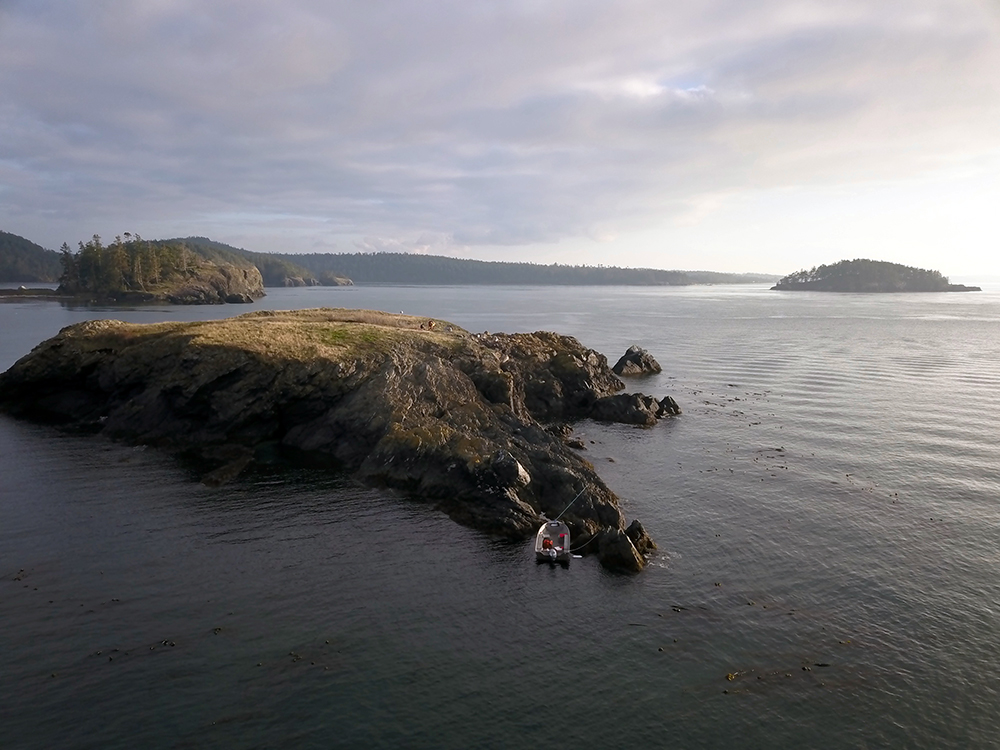
P438 – UAV aerial photo of the island looking south. (Photo/Chad Pyatt, UNAVCO) 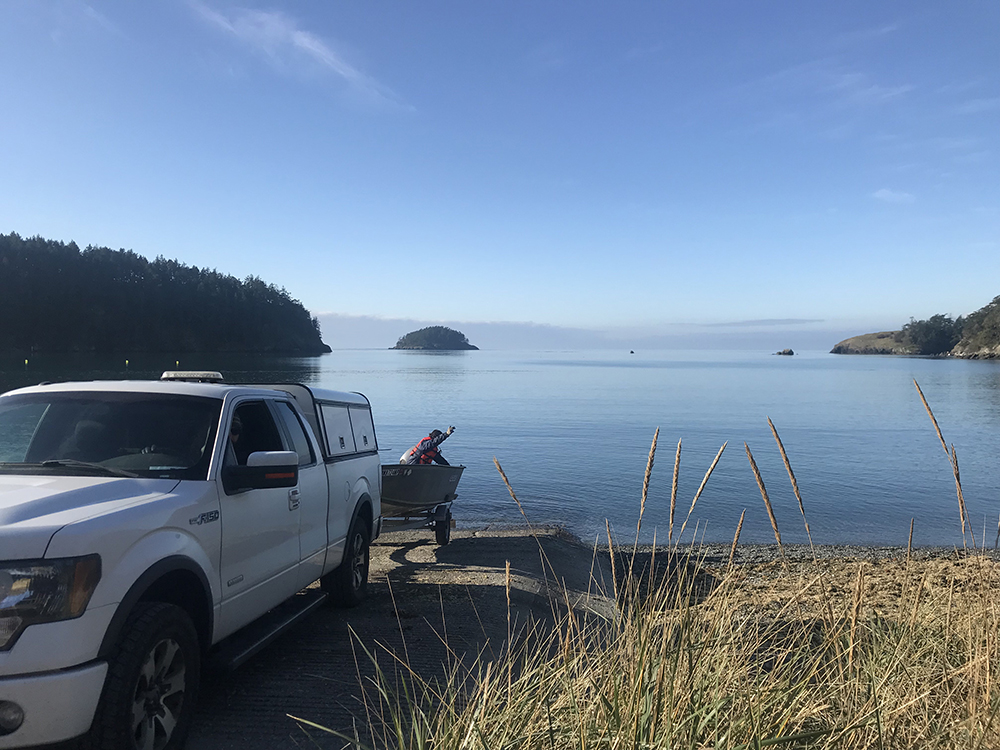
Boat launch, looking west. Northwest Island is located to the right (north) around the tip of point. (Photo/Liz Van Boskirk, UNAVCO) 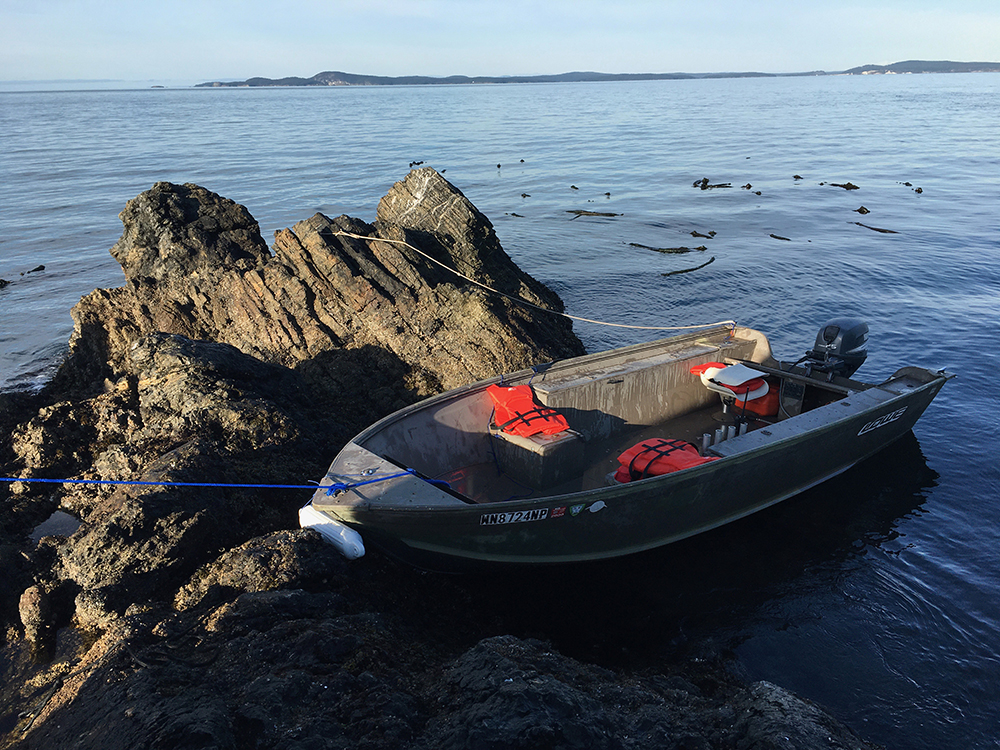
The boat landing. Rubber bumpers and mats were used to protect from rock abrasion. (Photo/Chad Pyatt, UNAVCO) 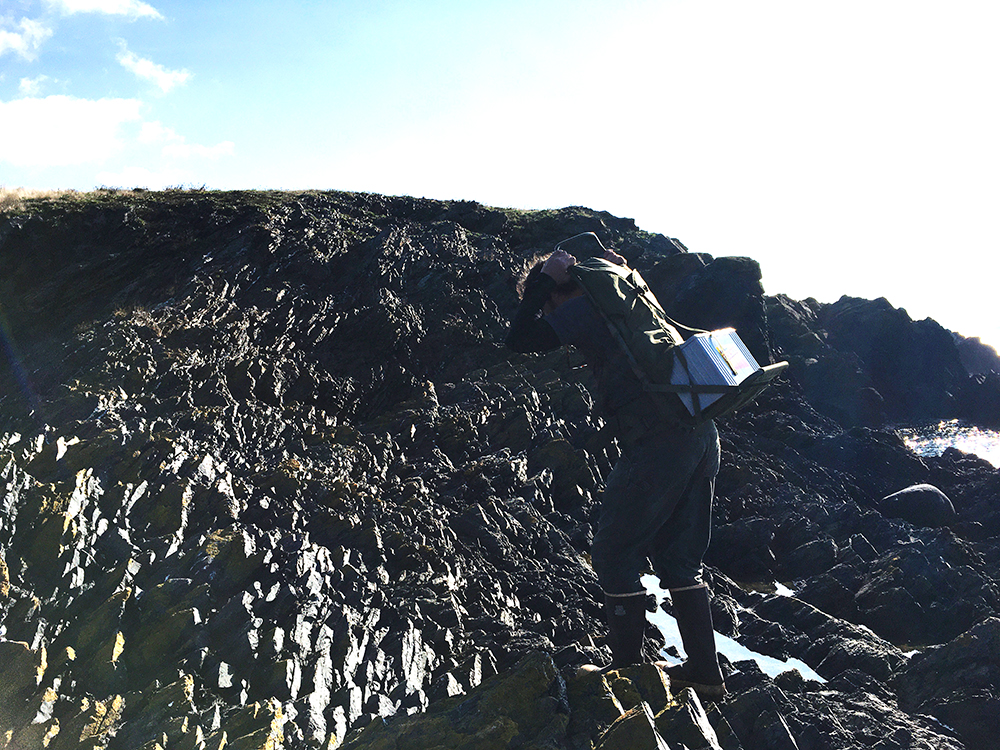
Field Engineer Chad Pyatt carries a battery from the boat up to the site. Note the tilted and eroded meta-sedimentary bedrock. (Photo/Liz Van Boskirk, UNAVCO) 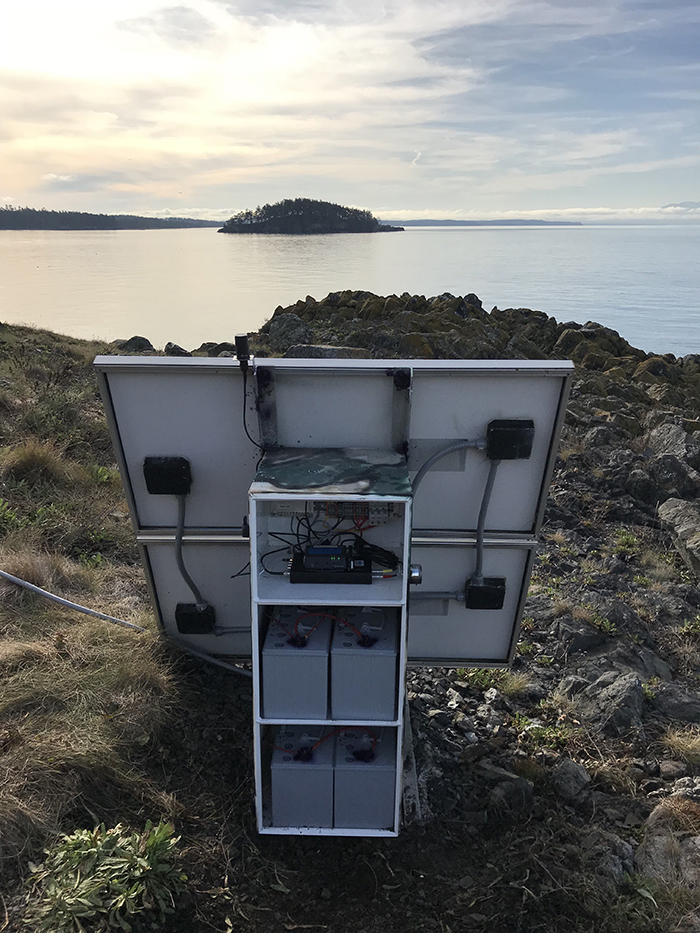
The new enclosure, batteries and GNSS equipment. (Photo/Liz Van Boskirk, UNAVCO) 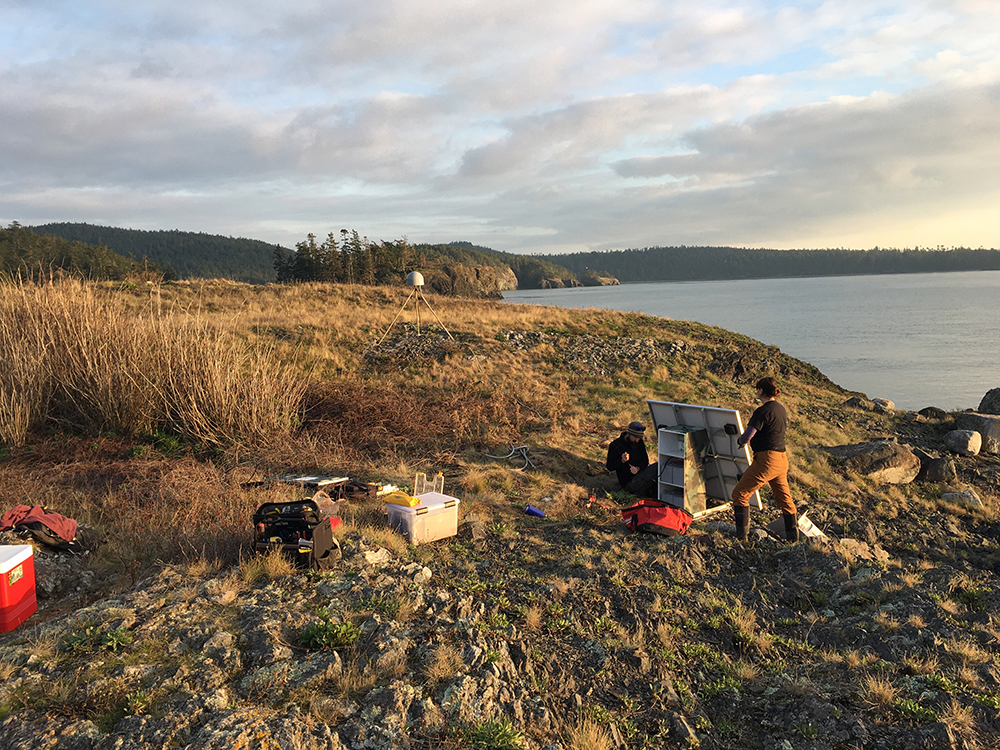
Ken Austin and Liz Van Boskirk working on the power system. (Photo/Chad Pyatt, UNAVCO) 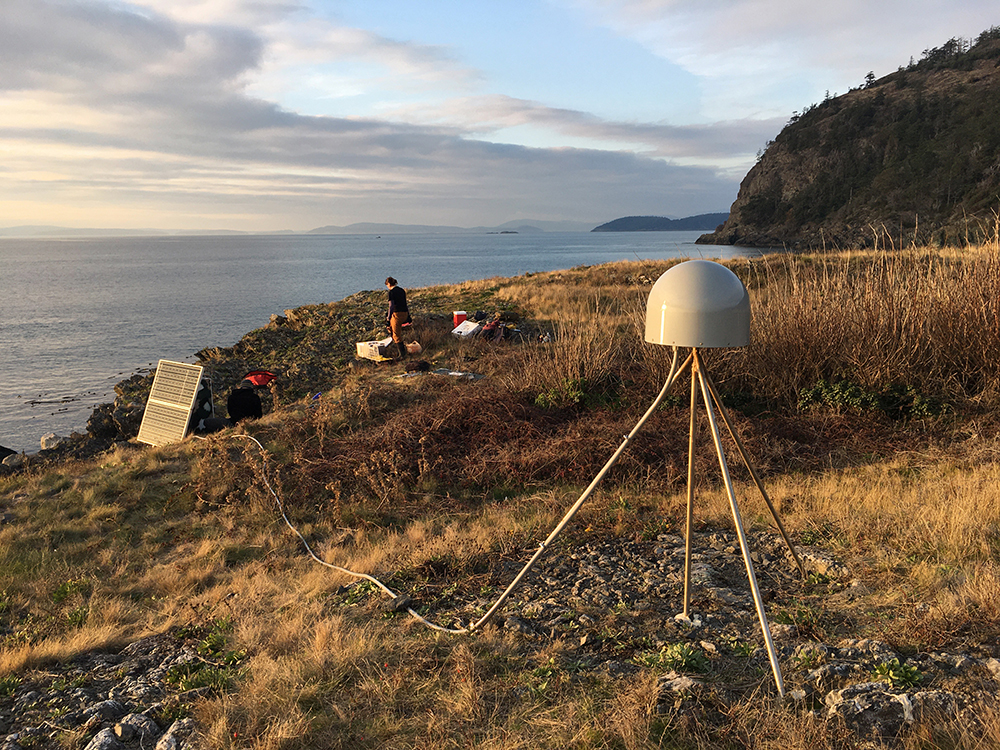
The new radome and conduit run from the monument to the enclosure. (Photo/Chad Pyatt, UNAVCO) 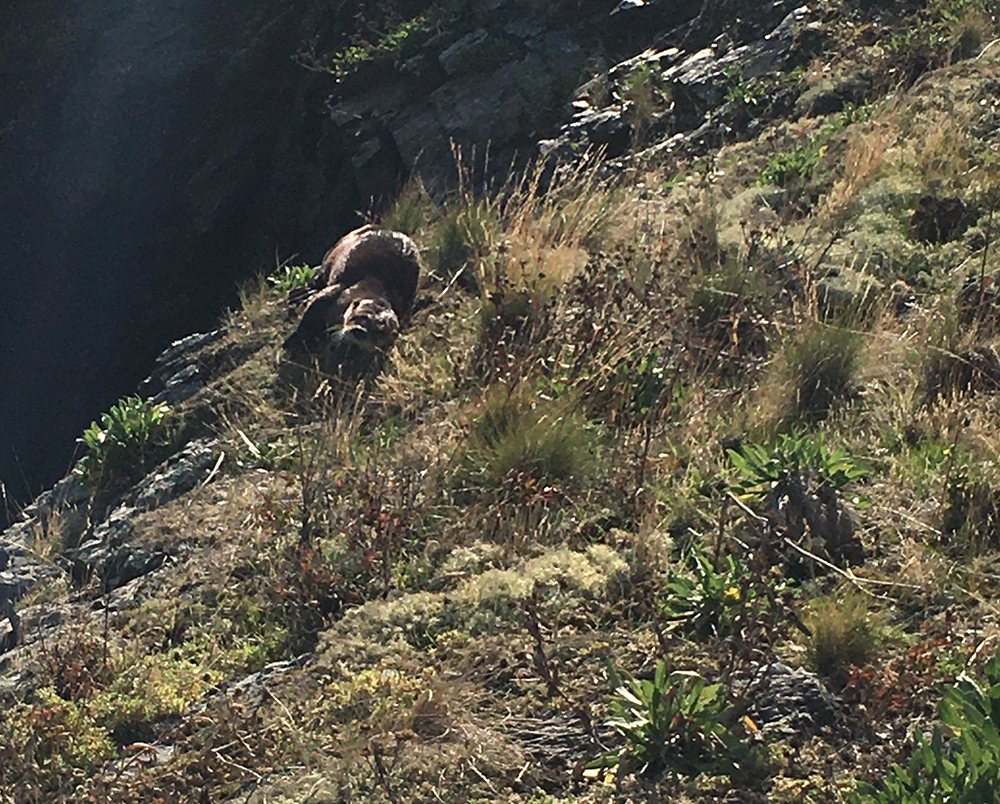
This playful otter shared the island with the crew and posed for photos. (Photo/Chad Pyatt, UNAVCO) 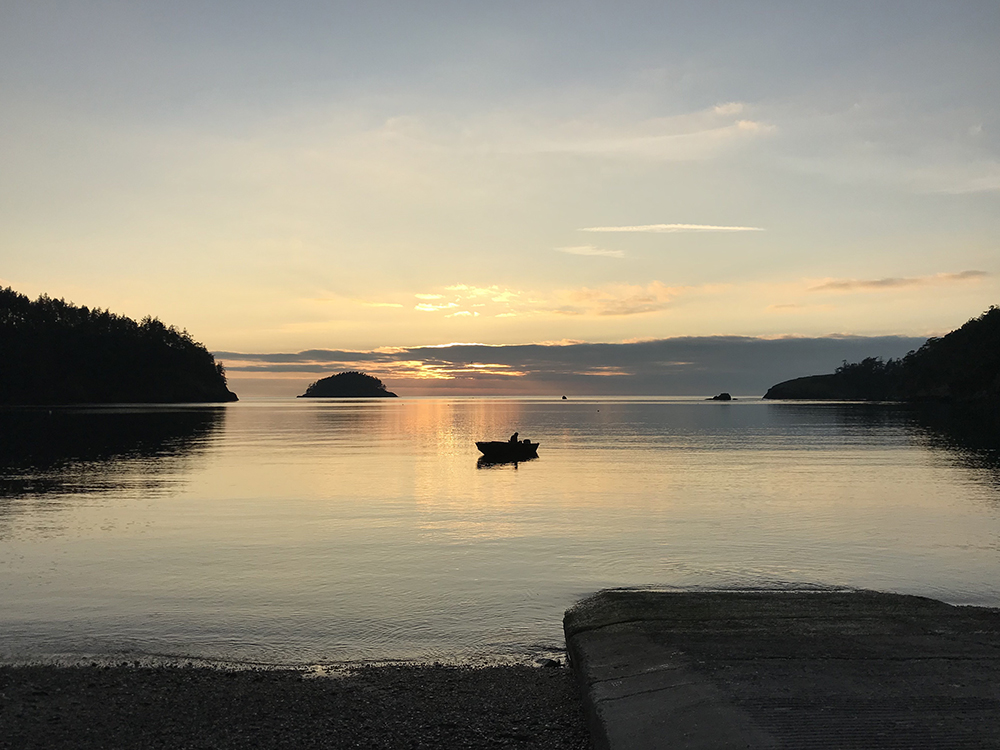
Getting ready to load the boat on the trailer at the end of the first day. (Photo/Liz Van Boskirk, UNAVCO)
Overview
GPS/GNSS station P438 is located on Northwest Island, a small uninhabited island adjacent to Fidalgo Island in the Puget Sound. The site is in a prime location to capture episodic tremor and slip data and monitor ongoing plate deformation in the Cascadia subduction zone. Yet site access is tricky: P438 is only accessible via boat or helicopter.
Originally a PANGA site operated by Central Washington University (CWU), the site was transferred to the EarthScope Plate Boundary Observatory in the early 2000s and is now part of the federated Network of the Americas (NOTA), operated by UNAVCO. Previously, CWU and UNAVCO staff collaborated to perform site maintenance visits using a small inflatable boat. The CWU boat eventually deteriorated, and the last UNAVCO site visit was in 2009. In the last ten years, most data flow outages have been the result of communications failures at the onshore radio link, accessible by road. In mid-2018, however, the site went offline, and the problem was at the remote station on the island. Attempts to rent a boat capable of transporting equipment were unsuccessful. Charter costs to land staff and gear were exorbitant ($2000/day), and charter operators were reluctant to remain “on-station,” which raised serious safety concerns.
Also in 2018, P438 was chosen to be part of the ShakeAlert earthquake early warning network, and a reliable method to perform site operations and maintenance became imperative. This summer, Pacific Northwest NOTA staff purchased a small aluminum boat, and began preparing it for field work. UNAVCO Business Affairs staff were instrumental in getting the boat properly insured. NOTA staff outfitted the safety gear, completed safety training, and had the boat safety inspected by the US Coast Guard. The project plan had more in common with a helicopter flight than with normal maintenance; a detailed work schedule was created, and a Float Plan submitted. Each field team member carried a personal locator beacon, and the team had a satellite phone and marine radio on board. An off-site member served as safety coordinator and site check-in contact.
The team spent 1.5 days on the island, staying in nearby Anacortes, Washington. The station had held up surprisingly well in the salt air. The batteries in the enclosure were original, and even though the contacts were highly corroded, the GPS receiver was still collecting data. The team performed a full GNSS site upgrade, swapped the batteries, replaced the electronics enclosure, rewired the power system, and installed a CDMA modem for communications. The team also ran conduit and new cable from the antenna monument, and re-wired the solar panels. For the 2020 field season, they plan to harden the site against the salt air and improve the power system.
In outstanding weather, the team completed the work safely and were able to bring P438 back to life after 16 months offline. They also shared the island with a playful otter, saw dolphins just off the island to the west, and took many photos, including some outstanding sunset shots. Unfortunately, they couldn’t quite settle on a name for the boat. Something to do for next time!
Project Information
- Project: UNAVCO NOTA
- UNAVCO Staff: Ken Austin, Chad Pyatt, Liz Van Boskirk, Adam Woolace
- Dates: November 5-6, 2019
- Location: Northwest Island, Deception Pass State Park, Washington (map)
- Funding Source: NSF
Related Links
Written by:
- Chad Pyatt
- Posted: 15 November 2019
- Last updated: 4 June 2021
- Tags: GPS/GNSS, project highlights


